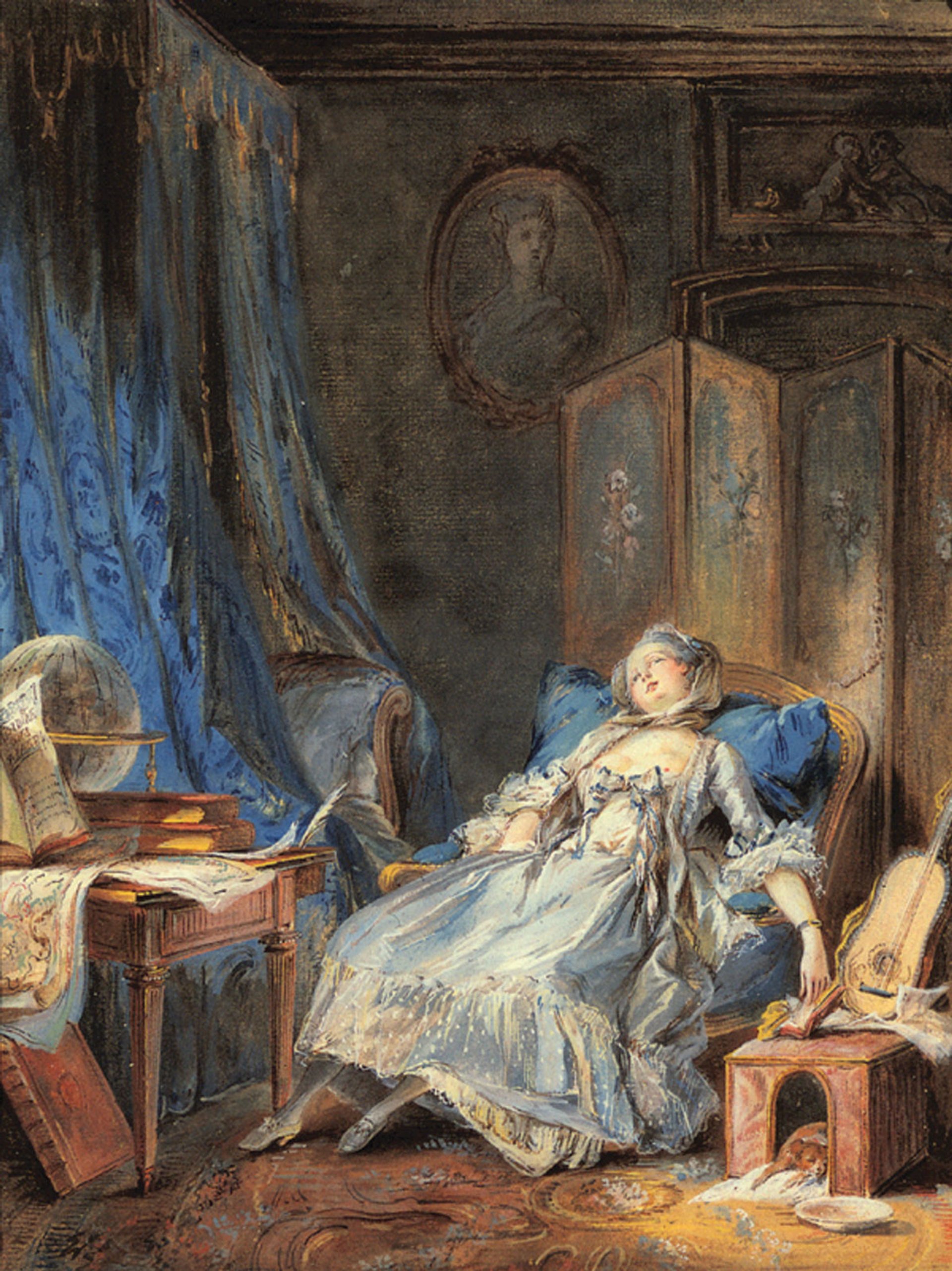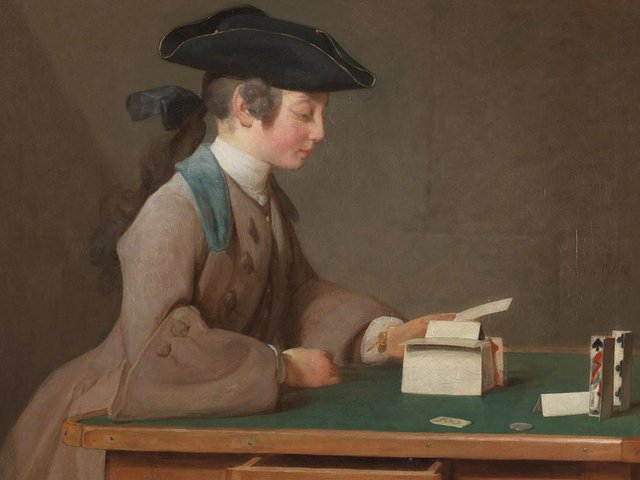Most who take an interest in 18th-century French art will know of the Goncourt brothers’ description of “the meanderings, the undulations, the pliancies of a woman’s body” in relation to Watteau, or their ecstatic response to Fragonard’s La Chemise enlevée (around 1770) depicting “a woman… on whose mouth hovers a languid smile, [trying], somewhat faintly, to retain the nightgown that has already been ravished from her body…” Add to these fantasies recent, more scholarly explorations of eroticism in exhibitions such as The Loves of the Gods (1991), Boucher, Seductive Visions (2004) and Fragonard Amoureux (2015) and one might wonder what more there is to say. A lot, as it turns out, as Guillaume Faroult’s meticulously annotated book makes clear.
Faroult identifies four categories of erotic image: the pastoral utopia of the fêtes galantes; the more sexually suggestive (“libertin”) images that emerged after the death of Louis XIV; pornographic images produced from the 1740s, then called “licencieux”, “lascif” or “obscène”; and, in reaction to them and to the double-entendres of libertinage, images of sincere and constant love.
Each type was inspired by contemporary literature or a re-edition of an older work. The pastoral utopia of the fête galante had roots in 17th-century French literature, such as Honoré d’Urfé’s L’Astrée. This, revived by l’abbé de Choisy’s La Nouvelle Astrée (1712), endorsed a respectful reciprocity between the sexes, although a “galant” painting could be subverted by sexually suggestive verses on the related print. Watteau’s libertin La Toilette intime (around 1718) was, however, less explicit than La Toilette, a print attributed to Bernard Picart of around 1710 showing a young, fashionably dressed young man washing the naked body of his mistress. The latter anticipates images like the engraving with gouache and watercolour of around 1750 attributed to Antoine Alexandre Marolles. This, showing an episode from Tableaux des mœurs du temps dans les différens âges de la vie (1750), is a more costly example of the kind of pornographic illustration produced from the 1740s, such as in Gervaise de Latouche’s Histoire de Dom B*** (1741). In what was a golden age for illustrated books, attempts to repress licentious images were restrained by their being favoured in the highest social circles. As Faroult explains, the vigour shown in the pursuit of Histoire de Dom B*** owed more to its scorn for religious institutions.
Faroult’s chapters on Pierre-Antoine Baudouin and Fragonard develop his earlier work in the catalogue of Fragonard Amoureux. His analysis of the gouaches of Baudouin is particularly valuable. Baudouin’s gouache, La Lecture (around 1765), shows a bare-breasted young woman in a study, with a globe, maps and heavy volumes on a desk, who has put aside her novel to masturbate. As Faroult points out, masturbation was practised by the eponymous narrator of the anonymously authored Thérèse philosophe (1748), which challenged church and medical strictures against it.

Pierre-Antoine Baudouin's La Lecture (1760) Musée des Arts Décoratifs
Baudouin’s risqué scenes were unfavourably compared by Diderot to Greuze’s moral lessons, examples of which Faroult notes, and the 1760s saw published criticism of the lack of sincerity in matters of the heart increasing. Fragonard generally suggested, rather than depicted, genitals, but the explicit nudity in Fragonard’s Two Girls on a Bed Playing with their Dogs (around 1770) cannot be confirmed as unique pending the re-emergence of La Gimblette, now known through two versions of Bertony’s 1783 print, one with the young woman’s vagina exposed, the other with it draped. Nevertheless, Fragonard, or his patrons, responded to the revival of conjugal morality with paintings such as The Visit to the Nursery (1775).
Throughout this carefully documented work, Faroult draws pertinent comparisons between images and the printed word. Absent is any comment on the kind of pubescent girl depicted by Greuze and his imitators, whom in a troubling simile the Goncourt brothers likened to an ingénue offered by the artist “as a perverted child might be offered to an old man to reawaken his senses”. However, this is minor criticism of an important book, which in a thorough exploration of its theme will now become required reading.
• Guillaume Faroult, L’amour peintre: l’imagerie érotique en France au XVIIIe siècle, Cohen et Cohen, 569pp, €120 (hb)
• Humphrey Wine is an Honorary Research Fellow at the University of Western Australia



